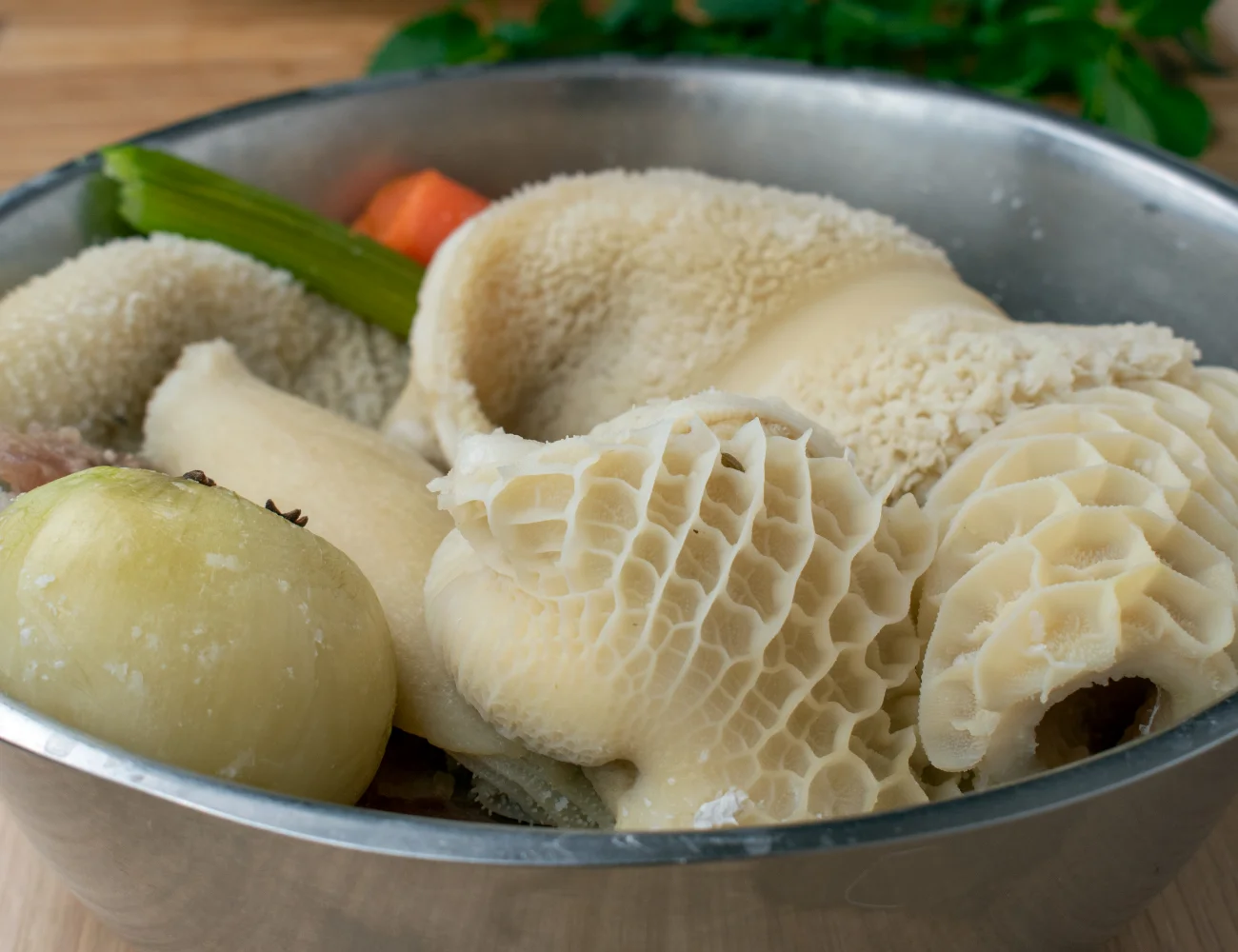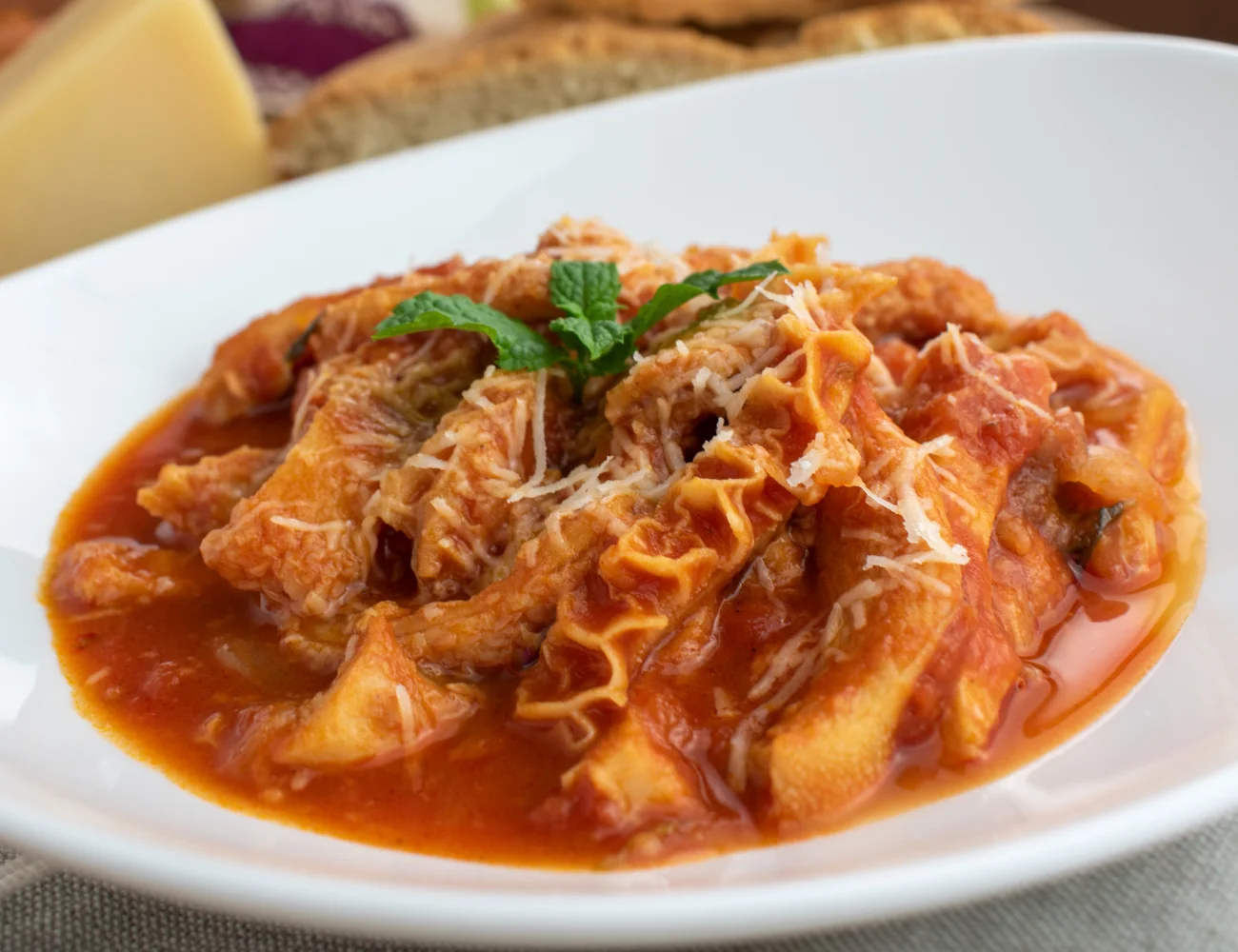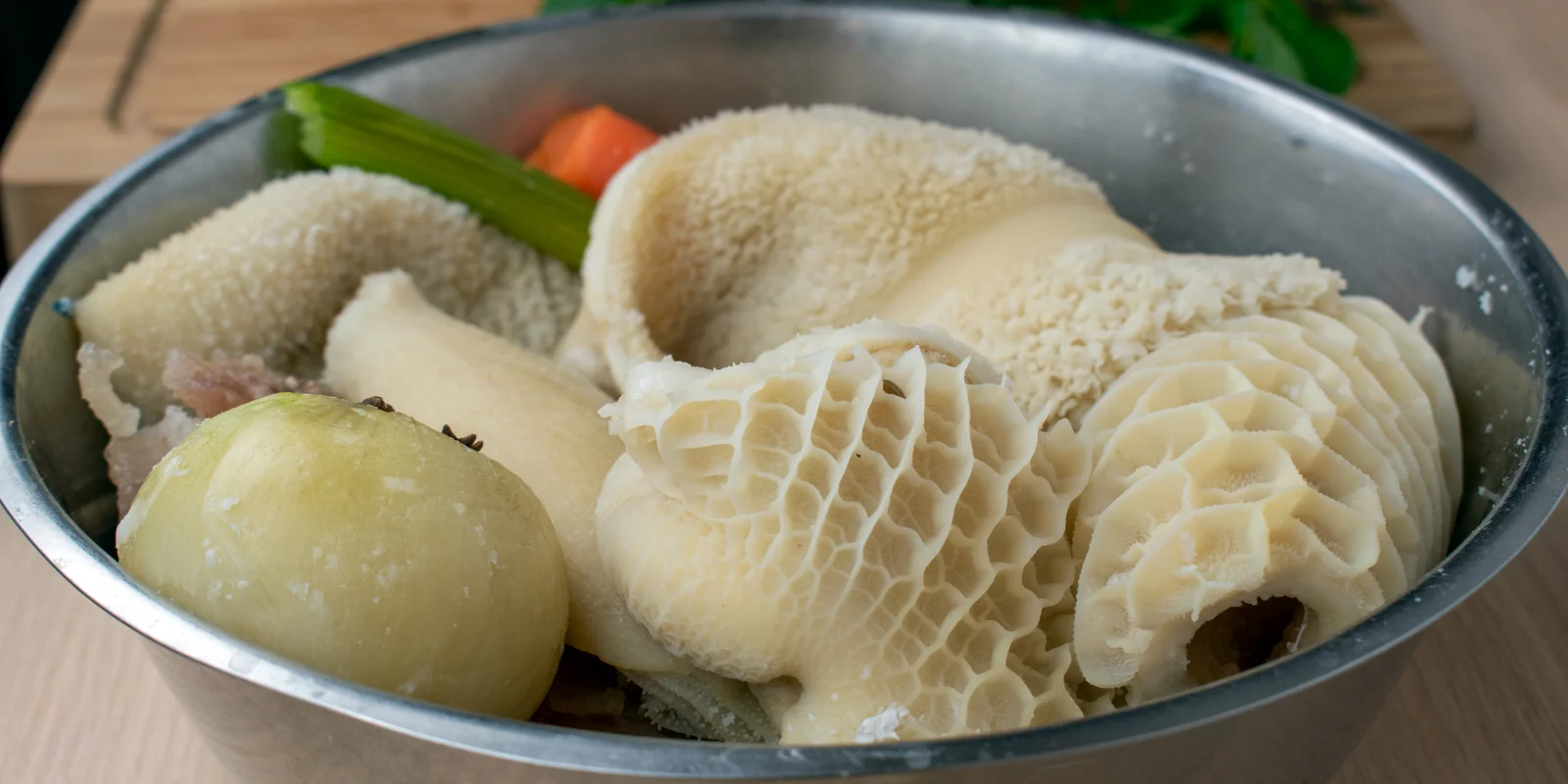First of all, what is tripe? Tripe is a type of offal (organ meats) that is made from the stomach lining of various animals, most commonly cows. It’s a versatile ingredient that has been used in cooking worldwide due to its unique texture and flavor. In its raw form, tripe is a pale white color with a spongy texture. It’s often cleaned, blanched, and then cooked for an extended period to make it tender. Different cultures prepare tripe in various ways, such as in stews, soups, and even fried as a snack. Its distinct, somewhat neutral flavor makes it a canvas for different types of seasonings and sauces, adapting well to a variety of culinary traditions.
Tripe, an ingredient that often sparks curiosity and, sometimes, trepidation, holds a significant place in the culinary traditions of many cultures worldwide. But few have embraced this versatile ingredient as wholeheartedly as Italy has. The story of Italian tripe is a tale of resourcefulness, ingenuity, and gastronomic evolution, traversing centuries of tradition and numerous regional cuisines.

The Ancient Origins: Tripe in the Times of Rome
The tale of Italian tripe began during the time of the Romans. The ancient Romans, famed for their banquets and elaborate dishes, were no strangers to the idea of nose-to-tail eating. They utilized every part of the animal, ensuring nothing went to waste, including the stomach or the tripe. Apicius, the oldest known Roman cookbook, dating from the 4th or 5th century AD, documents dishes involving every part of the animal, including tripe, illustrating how this ingredient was a staple in Roman cuisine.
One such dish, “Minutal Matianum,” involved stewing the tripe with wine, honey, oil, and fish sauce, a common flavoring of the time. The dish, named after the gastronome Marcus Gavius Apicius, demonstrates the creative culinary uses of tripe even in these ancient times.

Middle Ages and Beyond: Tripe’s Place in Society
As we travel forward to the Middle Ages, the popularity of tripe continued. During this period, however, the use of tripe became a marker of social status. The nobility and upper classes often favored ‘noble’ meats, such as venison or wild boar (check out our Wild Boar Ragù recipe), leaving the less glamorous cuts, including tripe, for the working class and poor.
This, however, did not diminish the value of tripe in their eyes. Resourceful home cooks began developing dishes that celebrated the humble tripe, utilizing local flavors and seasonings to transform it into a dish of comfort and sustenance. The history of Italian tripe, therefore, serves as a testament to culinary resilience and creativity amidst societal and economic challenges.
Modern Italy: Regional Triumphs of Tripe
Fast forward to modern times, and Italian tripe dishes have not only survived but thrived, with variations that celebrate regional differences in flavors and cooking techniques.
In Florence, ‘Trippa alla Fiorentina‘ is a much-cherished dish. This rich and hearty stew, simmered with tomatoes and a hint of Parmigiano-Reggiano, highlights the Florentine love for simple yet flavor-packed dishes. Served in sandwich form as a ‘lampredotto’ – the local name for the fourth and final stomach of a cow – it’s a common sight at Florence’s bustling food stands.

In the Piedmont region, ‘Trippa alla Piemontese‘ is another testament to the enduring love for tripe. This dish features tripe slow-cooked in a robust mixture of red wine, vegetables, and herbs, echoing the region’s rich gastronomic landscape.
Heading south to Naples, ‘Trippa Napoletana‘ takes the stage. This Neapolitan preparation sees tripe cooked with a variety of local ingredients, including tomatoes, garlic, and chili pepper, reflecting the region’s preference for bold, zesty flavors.
The Eternal City’s Culinary Gem: Trippa alla Romana
No discussion of Italian tripe would be complete without focusing on the Italian tripe recipe called ‘Trippa alla Romana,’ a signature dish from Rome, which best exemplifies the enduring love Italians have for this humble offal.
Trippa alla Romana (Roman-style Tripe) is a rich, hearty stew, characterized by its slow-cooked tripe immersed in a vibrant tomato sauce. Mint and pecorino cheese—two distinctly Roman ingredients—lend a unique touch to this regional variant. They add a refreshing contrast to the dish, balancing the richness of the tripe and the sweetness of the tomato sauce.
To prepare Trippa alla Romana, the tripe is thoroughly cleaned, boiled, and then cut into thin strips or small squares. It’s then slow-cooked in a flavorful tomato sauce enriched with onions, carrots, celery, and a splash of white wine. This mixture is left to simmer until the tripe becomes tender and absorbs the aromatic flavors of the sauce. The final touch is a scattering of freshly chopped mint and a generous sprinkle of pecorino romano cheese.
Trippa alla Romana holds a special place in the hearts of Romans. It’s not just a dish; it’s a testament to Rome’s historical and cultural identity, a cherished connection to the past that continues to be celebrated in the city’s trattorias and family homes. It reflects the Roman ethos of ‘quinto quarto’ (the fifth quarter), a philosophy centered around nose-to-tail eating, demonstrating respect for the animal by ensuring nothing goes to waste.

Conclusion: The Legacy of Italian Tripe
Today, the legacy of Italian tripe remains strong, a testament to its long, rich history. Its story tells of culinary resourcefulness and the power of food to transcend social classes. Whether stewed, fried, or served in a sandwich, tripe continues to be a celebrated part of Italian cuisine, a tangible link to the country’s gastronomic past, and an example of how a humble ingredient can create culinary magic. So, next time you spot tripe on a menu or in a market, remember, you’re not just looking at a piece of offal – you’re looking at centuries of culinary history and tradition, a tradition that’s very much alive in the heart of Italy.
